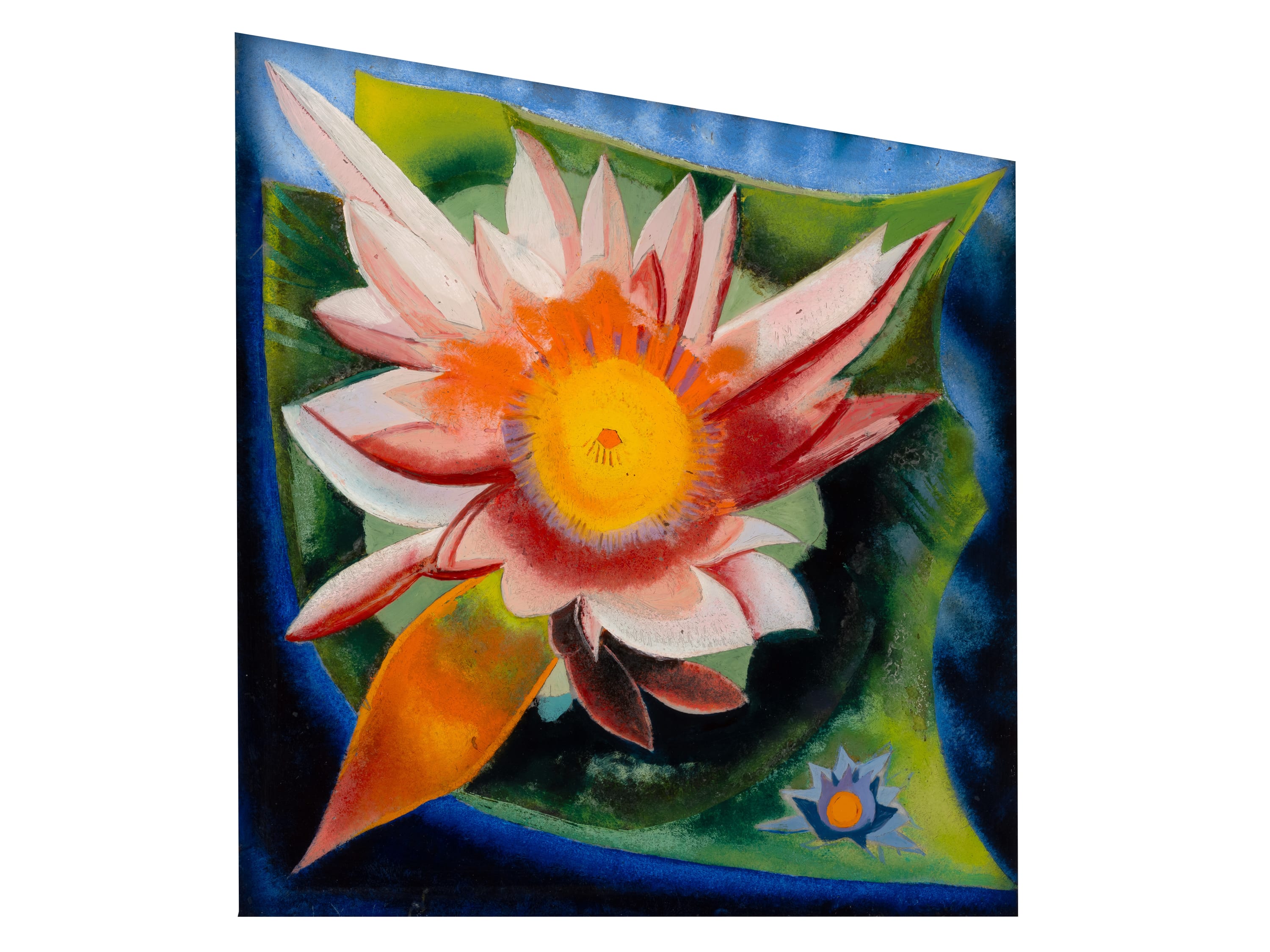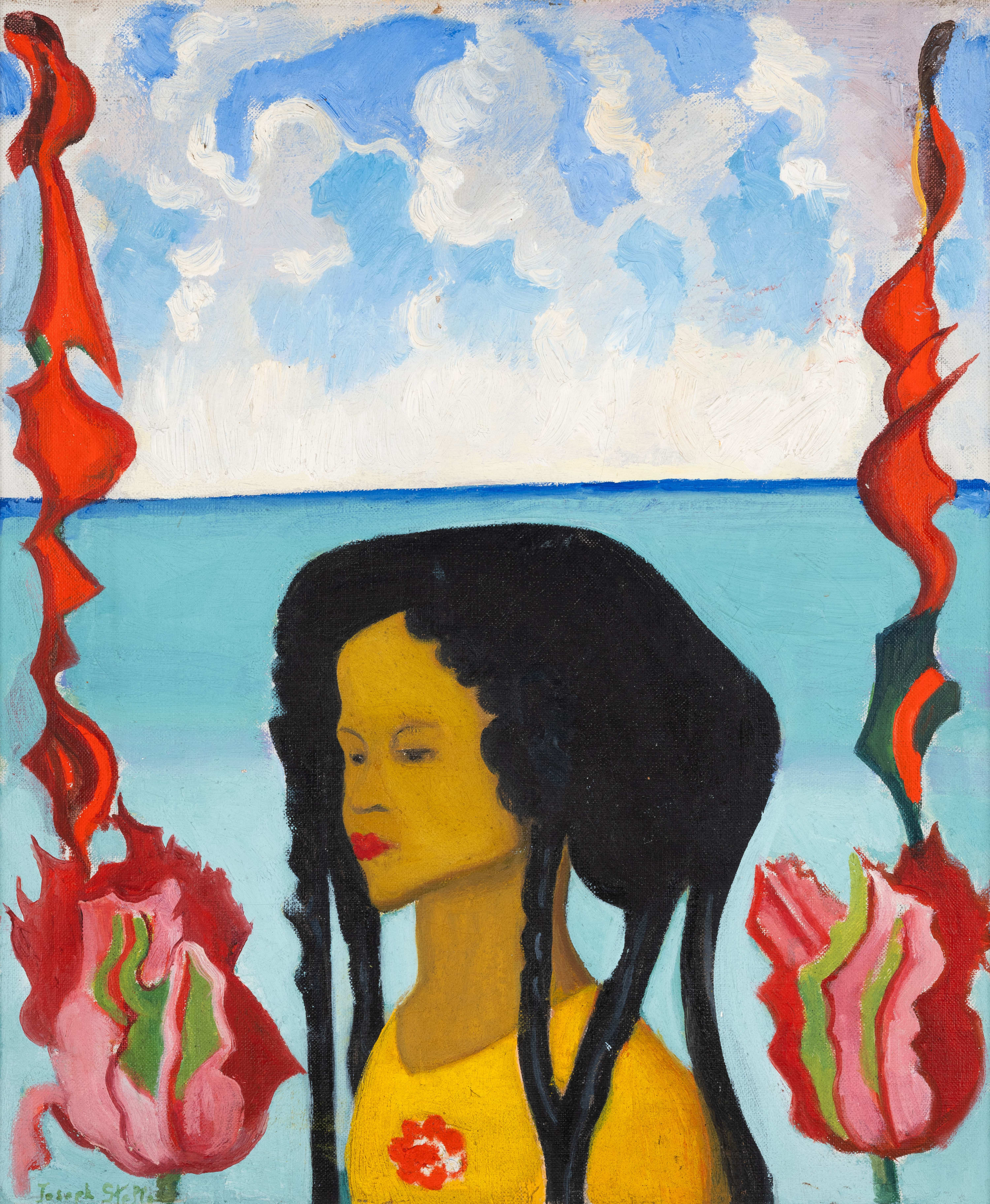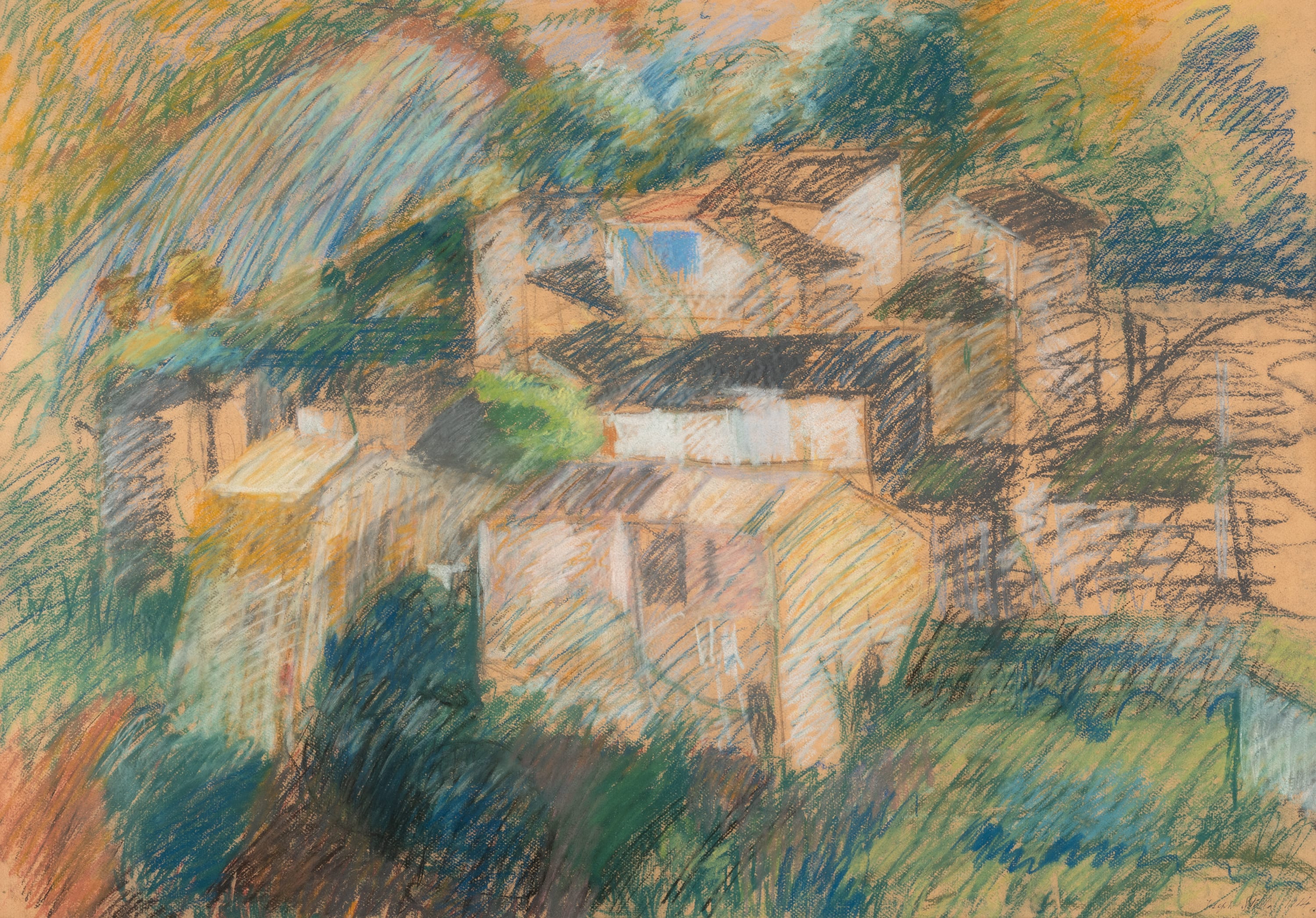Schoelkopf Gallery is pleased to present Joseph Stella: Unsealed from Paradise, on view from October 13 to December 1, 2023. Describing Barbados following a 1937–38 trip, Joseph Stella wrote: "...gorgeous rainbows unfold all the glory of celestial hues, unsealed from Paradise, to clasp in divine unity the terse blue and the vivid emerald resplendent from sky and sea" (Joseph Stella, "Barbados" privately printed with "The Birth of Venus," 1941, Stella Papers, AAA, reprinted in Haskell, Joseph Stella, 210).
This exuberant reflection reveals Stella's deeply personal connection with nature as a wellspring of artistic inspiration. While Stella has long been celebrated for his depictions of urban subjects such as the Brooklyn Bridge, his decadent visions of a marvelous natural world begun following World War I deserve further study and have been the focus of renewed scholarly interest beginning with the 2022–23 major traveling exhibition Joseph Stella: Visionary Nature, organized by the High Museum of Art, Atlanta, in collaboration with the Brandywine River Museum of Art, Chadds Ford, Pennsylvania.
Uniting works exhibited in the retrospective alongside examples from distinguished North American private collections, Schoelkopf Gallery’s Joseph Stella: Unsealed from Paradise presents paintings and works on paper from 1914 to 1944 that testify to Stella's relentless curiosity about singular materials and methods such as silverpoint and glass, to his creative relationships with other artists such as Dada leader Marcel Duchamp, but most importantly, to his profound fascination with the organic universe as he strove to unseal from paradise, through his unique visual language, the abundance of nature.
The exhibition is accompanied by a scholarly essay by Stephanie Mayer Heydt, the outgoing Margaret and Terry Stent Curator of American Art at the High Museum of Art in Atlanta and lead curator of Joseph Stella: Visionary Nature. Click below to view the essay:
-
Reverse painting on glass was practiced in America as early as the eighteenth century. A folk art traditionally associated with craft practiced by women, reverse painting on glass captured the attention of modernists in the twentieth century, including Americans Marsden Hartley and Joseph Stella, who described glass as “a utopian substance that would make up the technological world of the future.” European modernists also experimented with the medium of glass using a variety of methods. Wassily Kandinsky was one of the early adopters of the medium. Marc Chagall painted 86 stained glass windows across Europe, Israel, and the United States, including Reims Cathedral. Surrealist artists developed the technique decalcomania, in which wet paint is transferred to a glass support through a blotting process, creating a pattern produced by chance without conscious thought. Dada leader Marcel Duchamp famously used glass as a support to create his ambitious The Bride Stripped Bare by Her Bachelors, Even (The Large Glass) (1915–23), in which he investigated mechanical process, pictorial illusion, and chance. Duchamp was Stella's good friend and may have encouraged him to experiment with the medium.
-

Joseph Stella
Joseph Stella, 'The Water Lily', c. 1924SOLD -

-

Joseph Stella
Woman and Sea, c. 1938Oil on canvas
18 x 15 inches
45.7 x 38.1 cm -

Joseph Stella
Untitled (Still Life with Peaches), undatedPastel on paper
11½ x 14½ inches
29.2 x 36.8 cm -

Joseph Stella
Old Brooklyn Houses, 1914Pastel on paper
19½ x 27 inches
49.5 x 68.6 cm -
If you would enjoy learning more about the available works, please contact Alana Ricca at (212) 879-8815, or alana@schoelkopfgallery.com. We look forward to being in touch.













